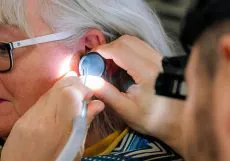What Is Pediatric Emergency Dental Care Treatment?
0 Views

Dental accidents and crises are widespread, but they are also frequently upsetting for both kids and parents. According to an emergency pediatric dentist, a dental emergency has happened to more than one-third of kids who have suffered dental harm. The first peak risk phase for dental trauma is toddlerhood (18–40 months) when children start to explore their environment. The second is the adolescent years when sports-related wounds and injuries become more common.
What pediatric emergency dental care treatment do they offer?
Toothache
Children of all ages frequently get toothaches, which rarely happen on their own. Young children may experience discomfort from the impaction of food, which can be relieved by using a toothbrush, a clean finger, or dental floss. Contact a Kids Dentist Surfside if the pain continues. Tooth fractures, tooth decay, dental trauma, and wisdom teeth eruption are typical reasons for tooth pain.
Dental intrusion (tooth pushed into jawbone)
Dental trauma can occasionally push one or more teeth upward into the jawbone. The outlook is better for teeth that have been moved up less (less than 3mm), but each case is different. The trauma frequently exerts enough force to damage the tooth’s ligament and break its socket.
Contacting the pediatric dental center of Miami immediately is crucial if the dental intrusion of the primary or permanent teeth is suspected. The pediatric dentist will either wait for the tooth to fall out naturally or undergo root canal therapy to keep the tooth’s structure. It depends on the type and depth of the intrusion.
Tooth avulsion (knocked-out tooth).
Contact the childrens dentist specialist near me if a child’s tooth has been knocked out of their mouth. Pediatric dentists typically avoid attempting to reimplant avulsed primary (baby) teeth since doing so can harm the tooth bud. It can damage the developing permanent tooth.
Unless the trauma has caused irreparable damage, specialists at the pediatric dental office always try to reimplant avulsed permanent teeth. Time is of the essence because the reimplantation operation is usually consistently more successful if it is carried out within an hour of the avulsion!
Tooth luxation, extrusion, lateral displacement.
Depending on how the tooth is oriented after a trauma, tooth displacement is typically categorized as “luxation,” “extrusion,” or “lateral displacement.” About 50% of the time, a luxated tooth still has its pulp. The underlying jawbone is sometimes shattered, and the tooth emerges at an abnormal angle.
A tooth partially separated from its socket is referred to as having “extrusion.” Primary tooth extrusions usually go away on their own in young children without the need for medical attention. To save the tooth and avoid infection, however, you should seek dental care for permanent teeth that have been displaced in any way.
Crown fracture
The most prominent and most noticeable portion of the tooth is its crown, and the area of the tooth most frequently damaged is the crown. There are various categories of crown fractures, from pulp exposure to tiny enamel cracks. Dental X-rays allow the pediatric dentist to determine the fracture’s extent quickly, but any tooth color change is an emergency warning sign.
Conclusion
The above-given details and information will help you learn some beneficial facts and details regarding emergency pediatric dental care. For more informative updates, please visit vippediatricdentist.com.
Related Posts

What Are the Benefits of Visiting an Ear Suction Clinic for Ear Wax Microsuction?
Andrin Andrin / January 10, 2025

















